Audi 2010 Annual Report Download - page 226
Download and view the complete annual report
Please find page 226 of the 2010 Audi annual report below. You can navigate through the pages in the report by either clicking on the pages listed below, or by using the keyword search tool below to find specific information within the annual report.-
 1
1 -
 2
2 -
 3
3 -
 4
4 -
 5
5 -
 6
6 -
 7
7 -
 8
8 -
 9
9 -
 10
10 -
 11
11 -
 12
12 -
 13
13 -
 14
14 -
 15
15 -
 16
16 -
 17
17 -
 18
18 -
 19
19 -
 20
20 -
 21
21 -
 22
22 -
 23
23 -
 24
24 -
 25
25 -
 26
26 -
 27
27 -
 28
28 -
 29
29 -
 30
30 -
 31
31 -
 32
32 -
 33
33 -
 34
34 -
 35
35 -
 36
36 -
 37
37 -
 38
38 -
 39
39 -
 40
40 -
 41
41 -
 42
42 -
 43
43 -
 44
44 -
 45
45 -
 46
46 -
 47
47 -
 48
48 -
 49
49 -
 50
50 -
 51
51 -
 52
52 -
 53
53 -
 54
54 -
 55
55 -
 56
56 -
 57
57 -
 58
58 -
 59
59 -
 60
60 -
 61
61 -
 62
62 -
 63
63 -
 64
64 -
 65
65 -
 66
66 -
 67
67 -
 68
68 -
 69
69 -
 70
70 -
 71
71 -
 72
72 -
 73
73 -
 74
74 -
 75
75 -
 76
76 -
 77
77 -
 78
78 -
 79
79 -
 80
80 -
 81
81 -
 82
82 -
 83
83 -
 84
84 -
 85
85 -
 86
86 -
 87
87 -
 88
88 -
 89
89 -
 90
90 -
 91
91 -
 92
92 -
 93
93 -
 94
94 -
 95
95 -
 96
96 -
 97
97 -
 98
98 -
 99
99 -
 100
100 -
 101
101 -
 102
102 -
 103
103 -
 104
104 -
 105
105 -
 106
106 -
 107
107 -
 108
108 -
 109
109 -
 110
110 -
 111
111 -
 112
112 -
 113
113 -
 114
114 -
 115
115 -
 116
116 -
 117
117 -
 118
118 -
 119
119 -
 120
120 -
 121
121 -
 122
122 -
 123
123 -
 124
124 -
 125
125 -
 126
126 -
 127
127 -
 128
128 -
 129
129 -
 130
130 -
 131
131 -
 132
132 -
 133
133 -
 134
134 -
 135
135 -
 136
136 -
 137
137 -
 138
138 -
 139
139 -
 140
140 -
 141
141 -
 142
142 -
 143
143 -
 144
144 -
 145
145 -
 146
146 -
 147
147 -
 148
148 -
 149
149 -
 150
150 -
 151
151 -
 152
152 -
 153
153 -
 154
154 -
 155
155 -
 156
156 -
 157
157 -
 158
158 -
 159
159 -
 160
160 -
 161
161 -
 162
162 -
 163
163 -
 164
164 -
 165
165 -
 166
166 -
 167
167 -
 168
168 -
 169
169 -
 170
170 -
 171
171 -
 172
172 -
 173
173 -
 174
174 -
 175
175 -
 176
176 -
 177
177 -
 178
178 -
 179
179 -
 180
180 -
 181
181 -
 182
182 -
 183
183 -
 184
184 -
 185
185 -
 186
186 -
 187
187 -
 188
188 -
 189
189 -
 190
190 -
 191
191 -
 192
192 -
 193
193 -
 194
194 -
 195
195 -
 196
196 -
 197
197 -
 198
198 -
 199
199 -
 200
200 -
 201
201 -
 202
202 -
 203
203 -
 204
204 -
 205
205 -
 206
206 -
 207
207 -
 208
208 -
 209
209 -
 210
210 -
 211
211 -
 212
212 -
 213
213 -
 214
214 -
 215
215 -
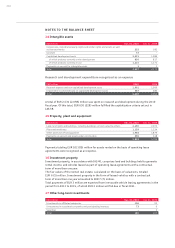 216
216 -
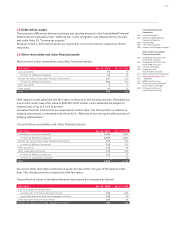 217
217 -
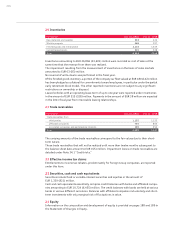 218
218 -
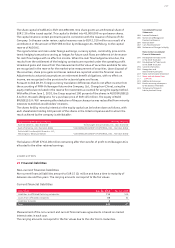 219
219 -
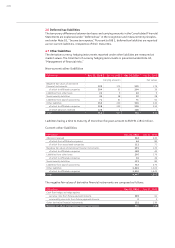 220
220 -
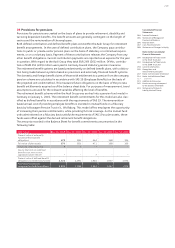 221
221 -
 222
222 -
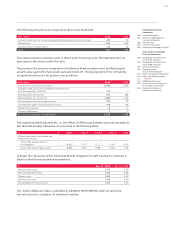 223
223 -
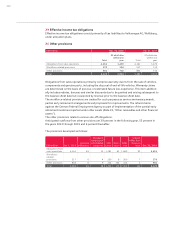 224
224 -
 225
225 -
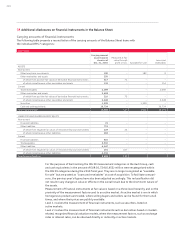 226
226 -
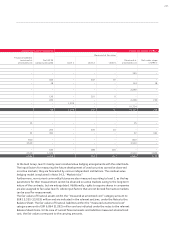 227
227 -
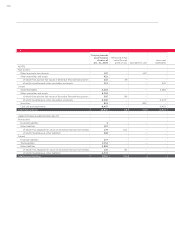 228
228 -
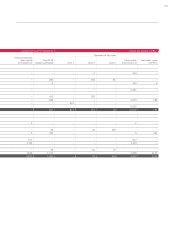 229
229 -
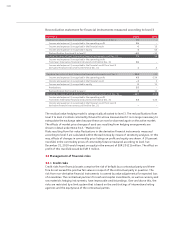 230
230 -
 231
231 -
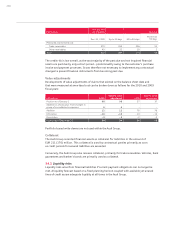 232
232 -
 233
233 -
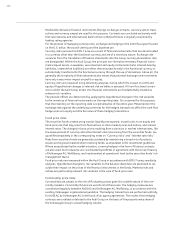 234
234 -
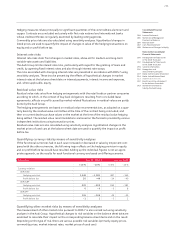 235
235 -
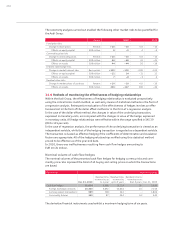 236
236 -
 237
237 -
 238
238 -
 239
239 -
 240
240 -
 241
241 -
 242
242 -
 243
243 -
 244
244 -
 245
245 -
 246
246 -
 247
247 -
 248
248 -
 249
249 -
 250
250 -
 251
251 -
 252
252 -
 253
253 -
 254
254 -
 255
255 -
 256
256 -
 257
257 -
 258
258 -
 259
259 -
 260
260 -
 261
261 -
 262
262 -
 263
263
 |
 |

224
33 Additional disclosures on financial instruments in the Balance Sheet
Carrying amounts of financial instruments
The following table presents a reconciliation of the carrying amounts of the Balance Sheet items with
the individual IFRS 7 categories:
EUR million
Carrying amount
as per balance
sheet as of
Dec. 31, 2010
Measured at fair
value through
profit or loss Available for sale Loans and
receivables
ASSETS
Non-current
Other long-term investments 190 – 182 9
Other receivables and assets 550
of which from positive fair values of derivative financial instruments 417 72 – –
of which miscellaneous other receivables and assets 132 – –114
Current
Trade receivables 2,099 – –2,099
Other receivables and assets 2,658
of which from positive fair values of derivative financial instruments 210 75 – –
of which miscellaneous other receivables and assets 2,448 – –2,228
Securities 1,339 – 1,339 –
Cash and cash equivalents 10,724 – –10,724
Total financial assets 17,560 147 1,521 15,173
LIABILITIES AND SHAREHOLDERS’ EQUITY
Non-current
Financial liabilities 15 – – –
Other liabilities 712
of which from negative fair values of derivative financial instruments 229 25 – –
of which miscellaneous other liabilities 483 – – –
Current
Financial liabilities 810 – – –
Trade payables 3,510 – – –
Other liabilities 4,447
of which from negative fair values of derivative financial instruments 291 107 – –
of which miscellaneous other liabilities 4,156 – – –
Total financial liabilities 9,494 132 – –
For the purposes of harmonizing the IAS 39 measurement categories in the Audi Group, cash
and cash equivalents in the amount of EUR 10,724 (6,455) million were recategorized within
the IAS 39 categories during the 2010 fiscal year. They are no longer recognized as “available
for sale” but are posted as “Loans and receivables” at cost of acquisition. To facilitate compari-
sons, the previous year’s figures have also been adjusted accordingly. This reclassification did
not result in any changes in value or effects on the overall result due to the short-term nature of
the assets.
Measurement of financial instruments at fair value is based on a three-level hierarchy and on the
proximity of the measurement factors used to an active market. An active market is one in which
homogenous products are traded, where willing buyers and sellers can be found for them at all
times, and where their prices are publicly available.
Level 1 involves the measurement of financial instruments, such as securities, listed on
active markets.
Level 2 involves the measurement of financial instruments such as derivatives based on market-
related, recognized financial valuation models, where the measurement factors, such as exchange
rates or interest rates, can be observed directly or indirectly on active markets.
